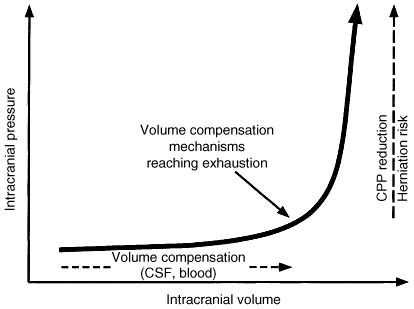Figure 53-3
Intracranial pressure-volume relationship. The horizontal
portion of the curve indicates that initially there is some latitude for compensation
in the face of an expanding intracranial lesion. This compensation is accomplished
largely by displacement of cerebrospinal fluid (CSF) and venous blood from the intracranial
to the extracranial spaces. Once the compensatory latitudes are exhausted, small
increments in volume result in large increases in intracranial pressure with the
associated hazards of herniation or decreased cerebral perfusion pressure (CPP) resulting
in ischemia.

